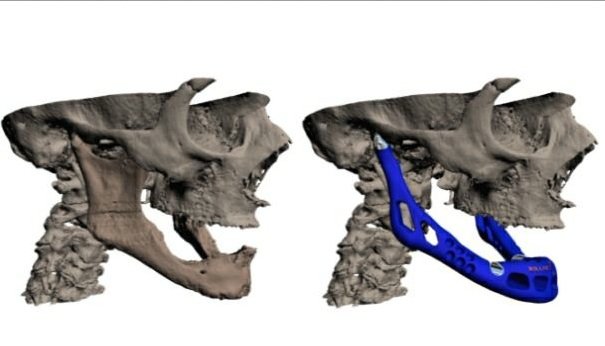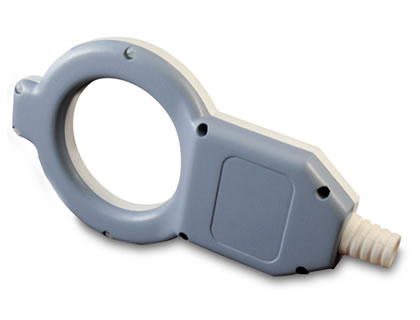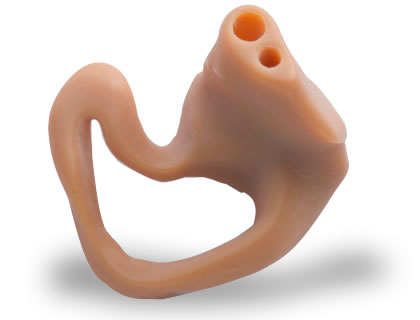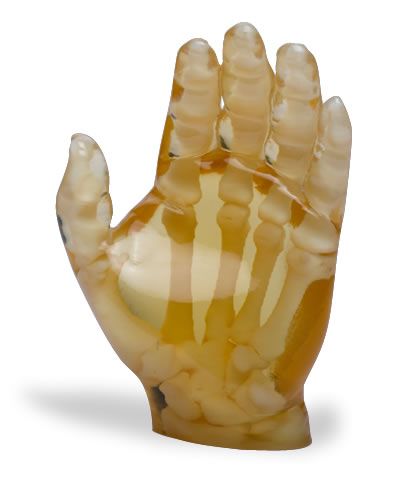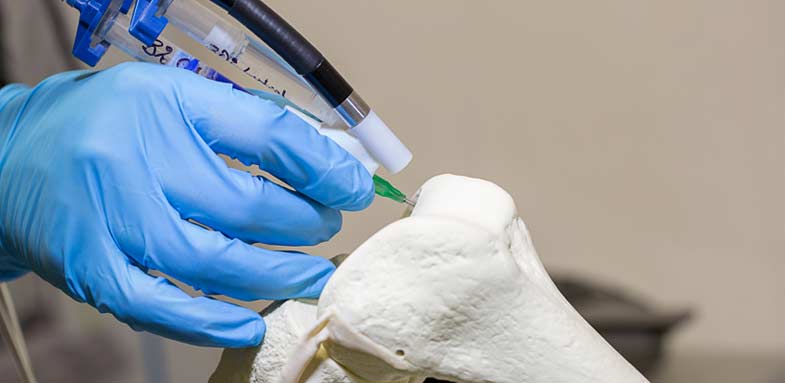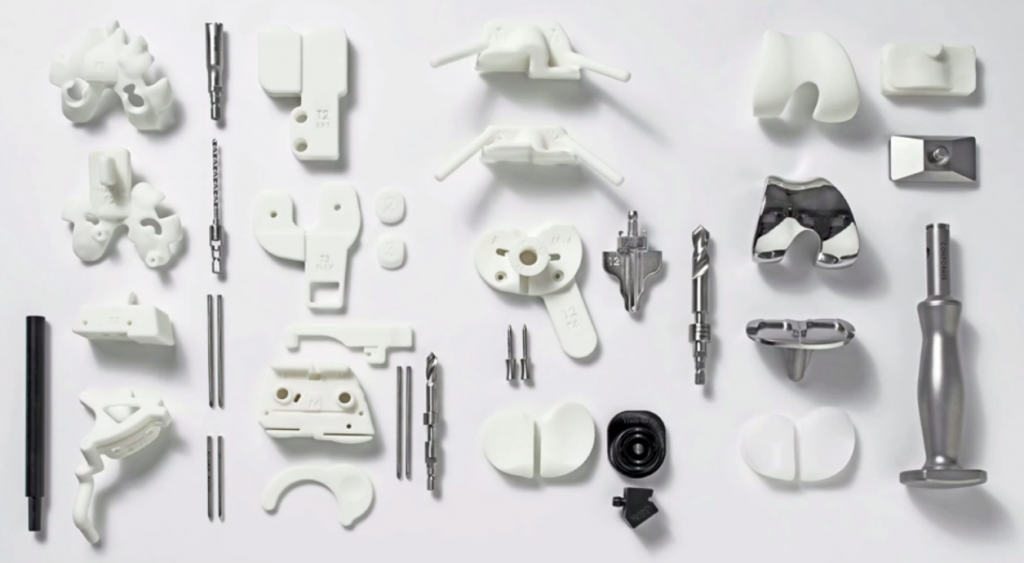How 3D Printing is useful in medical industry?
Accelerate time to create Clinical Trial Devices
In the past, prototypes were used sparingly in medical design work due to cost and time considerations, but 3D Printing provides a faster, more streamlined system that allows medical product manufacturers to develop clinical trial-ready devices in-house to check everything from form, fit and function to manufacturability.
Create End-use Medical Devices
Medical devices can also be difficult to produce, due to the small size and intricacy of the parts. Some medical parts are as small as a staple and measure just 0.020 inches in thickness. 3D Printing allows manufacturers to easily create these difficult parts from 3D CAD models.
Plan out Medical Procedures with Precise Anatomical Models
In cases where complex, multi-faceted surgical procedures are required, the ability to predetermine the best possible outcome is key. Anatomical modeling – made possible through the use of 3D printing which allows surgical teams to evaluate several different treatment scenarios before deciding on a plan that ensures these needs are met.
Advances 3d printing makes in medical field
3D printing may seem a little unfathomable to some, especially when you apply biomedical engineering to 3D printing. In general, 3D printing involves taking a digital model or blueprint created via software, which is then printed in successive layers of materials like glass, metal, plastic, ceramic and assembled one layer at a time. Many major manufacturers use them to manufacture airplane parts or electrical appliances.
1. Organs
While an entire organ has yet to be successfully printed for practical surgical use, scientists and researchers have successfully printed kidney cells, sheets of cardiac tissue that beat like a real heart and the foundations of a human liver, among many other organ tissues. While printing out an entire human organ for transplant may still be at least a decade away, medical researchers and scientists are well on their way to making this a reality.
2. Stem Cells
Stem cells have amazing regenerative properties already – they can reproduce many different kinds of human tissue. Now, stem cells are being bioprinted in several university research labs, such as the Heriot-Watt University of Edinburgh. Stem cell printing was the precursor to printing other kinds of tissues, and could eventually lead to printing cells directly into parts of the body.
3. Skin
Imagine the uses that printing skin grafts could do for burn victims, skin cancer patients and other kinds of afflictions and diseases that affect the epidermis. Medical engineers in Germany have been developing skin cell bio printing since 2010, and researcher James Yoo from Wake Forest Institute is developing skin graft printing that can be applied directly onto burn victims.
4. Bone and Cartilage
Hod Lipson, a Cornell engineer, prototyped tissue bio printing for cartilage within the past few years. Though Lipson has yet to bioprint a meniscus that can withstand the kind of pressure and pounding that a real one can, he and other engineers are well on their way to understanding how to apply these properties. Additionally, the same group from Germany who bioprinted stem cells is also working toward the same results for bioprinting bone and others parts of the skeletal system.
5. Surgical Tools
Just six months ago, bioengineering students from the University of British Columbia won a prestigious award for their engineering and 3D printing of a new and extremely effective type of surgical smoke evacuator. Other surgical tools that have been 3D printed include forceps, hemostats, scalpel handles and clamps – and best of all, they come out of the printer sterile and cost a tenth as much as the stainless steel equivalent.
6. Cancer Research
In the same way that tissue and types of organ cells are being printed and studied, disease cells and cancer cells are also being bioprinted, in order to more effectively and systematically study how tumors grow and develop. Such medical engineering would allow for better drug testing, cancer cell analyzing and therapy development. With developments in 3D and bioprinting, it may even be a possibility within our lifetime that a cure for cancer is discovered.
7.Heart and Blood Vessels
Another German institute has created blood vessels using artificial biological cells, a 3D inkjet printer and a laser to mold them into shape. Likewise, researchers at the University of Rostock in Germany, Harvard Medical Institute and the University of Sydney are developing methods of heart repair, or types of a heart patch, made with 3D printed cells.
The human cell heart patches have gone through successful testing on rats, and have also included development of artificial cardiac tissues that successfully mimic the mechanical and biological properties of a real human heart.
There are plenty of other developments being made with 3D and bio printing, but one of the biggest obstacles is finding software that is advanced or sophisticated enough to meet the challenge of creating the blueprint. While creating the blueprint for an ash tray, and subsequently producing it via 3D printing is a fairly simple and quick process, there is no equivalent for creating digital models of a liver or heart at this point.
Benefits of 3D Printing in Medicine
Customization and Personalization
The greatest advantage that 3D printers provide in medical applications is the freedom to produce custom-made medical products and equipment. For example, the use of 3D printing to customize prosthetics and implants can provide great value for both patients and physicians.3 In addition, 3D printing can produce made-to-order jigs and fixtures for use in operating rooms. Custom-made implants, fixtures, and surgical tools can have a positive impact in terms of the time required for surgery, patient recovery time, and the success of the surgery or implant. It is also anticipated that 3D printing technologies will eventually allow drug dosage forms, release profiles, and dispensing to be customized for each patient.
Increased Cost Efficiency
Another important benefit offered by 3D printing is the ability to produce items cheaply. Traditional manufacturing methods remain less expensive for large-scale production; however, the cost of 3D printing is becoming more and more competitive for small production runs. This is especially true for small-sized standard implants or prosthetics, such as those used for spinal, dental, or craniofacial disorders. The cost to custom-print a 3D object is minimal, with the first item being as inexpensive as the last. This is especially advantageous for companies that have low production volumes or that produce parts or products that are highly complex or require frequent modifications.
3D printing can also reduce manufacturing costs by decreasing the use of unnecessary resources. For example, a pharmaceutical tablet weighing 10 mg could potentially be custom-fabricated on demand as a 1-mg tablet. Some drugs may also be printed in dosage forms that are easier and more cost-effective to deliver to patients.
Enhanced Productivity
“Fast” in 3D printing means that a product can be made within several hours. That makes 3D printing technology much faster than traditional methods of making items such as prosthetics and implants, which require milling, forging, and a long delivery time. In addition to speed, other qualities, such as the resolution, accuracy, reliability, and repeatability of 3D printing technologies, are also improving.
Democratization and Collaboration
Another beneficial feature offered by 3D printing is the democratization of the design and manufacturing of goods. An increasing array of materials is becoming available for use in 3D printing, and they are decreasing in cost. This allows more people, including those in medical fields, to use little more than a 3D printer and their imaginations to design and produce novel products for personal or commercial use.
The nature of 3D printing data files also offers an unprecedented opportunity for sharing among researchers. Rather than trying to reproduce parameters that are described in scientific journals, researchers can access downloadable .stl files that are available in open-source databases. By doing so, they can use a 3D printer to create an exact replica of a medical model or device, allowing the precise sharing of designs. Toward this end, the National Institutes of Health established the 3D Print Exchange in 2014 to promote open-source sharing of 3D print files for medical and anatomical models, custom labware, and replicas of proteins, viruses, and bacteria.

